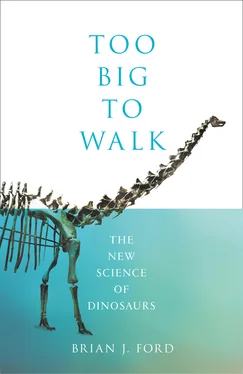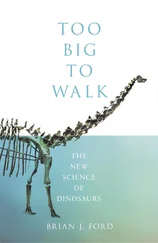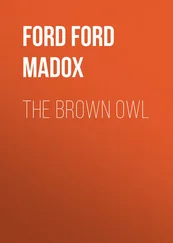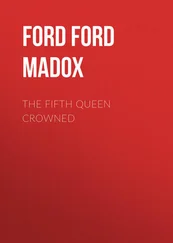It was also in 1820 that Mantell heard of a new source of fossilized bones – the quarries in Tilgate Forest near Crawley, Surrey, some 10 miles (16 km) to the north of Cuckfield, from where most of his specimens had come. He travelled by one-horse chaise and stayed at the Talbot inn, which stands to this day, and from there he rode over to the quarries. Pieces of rock had been set out by the quarrymen for him to peruse and perhaps purchase, and he took a selection to study. We remember the men in palæontology much better than the womenfolk, but – just as Mary Anning regularly provided new and exciting specimens for them to study – Mantell later wrote that he owed his greatest leap forward to his wife, when she stumbled across a find that would finally launch the science that we now know as palæontology.
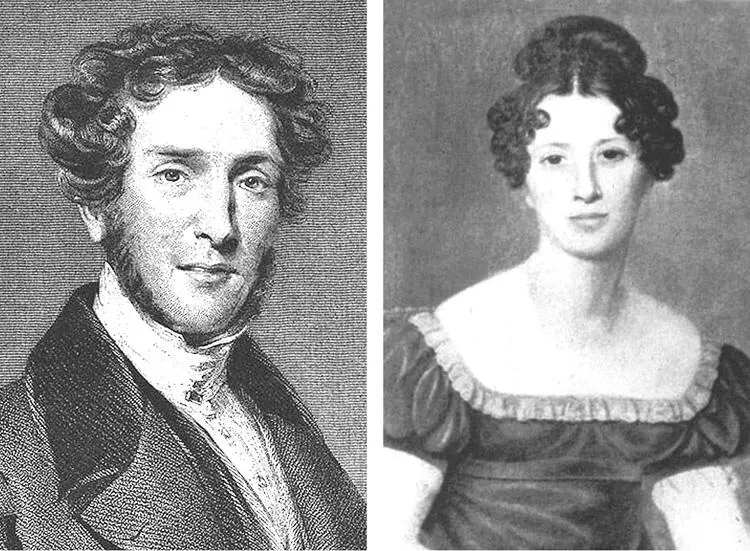
A devotee of Smith’s geological revelations was Gideon Mantell, an obstetrician and a brilliant amateur fossil hunter, who in 1822 first named a fossil dinosaur – Iguanodon . The fossils were originally thought to be those of a rhinoceros. In 1816 Mary Woodhouse married Gideon Mantell and became his co-worker. She was an accomplished artist and prepared many illustrations for publication. It has been said that Mary was the first to discover iguanodon teeth.
It was the summer of 1822, and Mary Ann was travelling with her husband en route to one of his patients at home. By the side of the road, she noticed a chunky fossil on a pile of discarded rubble and showed it to her husband. It was a huge tooth. This was the crucial discovery, and Gideon launched a full-scale investigation of the Tilgate Forest quarries, looking for more. Mantell did not record until 1827 that he had first been presented with that huge tooth by his wife, but – although they could not know this at the time – this was the tooth of an Iguanodon , a dinosaur that we now know measured 43 feet (13 metres) long and weighed some 4 tons. Other specimens were excavated by a quarryman, Mr. Isaac Leney from Cuckfield, and a selection of fossils was soon amassed. Clearly, they could only have come from a huge animal, and Mantell became increasingly excited.40
By the end of 1822 Gideon Mantell had at least half a dozen of these specimens, so he travelled to Paris the following year and showed them to Cuvier, who formally identified the specimens that the Mantells had collected as ‘the teeth of a gigantic crocodile, the teeth of a rhinoceros [and] bones of an herbivorous animal’ – in reality, the ‘crocodile’ was Megalosaurus and the ‘herbivorous animal’ would eventually prove to be Iguanodon . Mary Anning had recently found a virtually complete Plesiosaurus skeleton, and this was put on display along with the ‘Megalosaurus or great Fossil Lizard of Stonesfield’ that Buckland had brought along, and which Parkinson had included in his book. It had been excavated at Stonesfield. Cuvier was less dismissive of this fossil, describing it as ‘a monitor [lizard] forty feet long and the size of an elephant.’
Gideon and Mary Ann Mantell worked together on their major volume on the fossils of the South Downs, and it was published at about the same date as Parkinson’s book. It was an important book and it launched a more systematic study of fossils. The Mantells’ new book received a royal endorsement from King George IV at Carlton House Palace: ‘His Majesty is pleased to command that his Name should be placed at the head of the Subscription List for four copies.’41
Most of the fine lithographs that Mary Ann meticulously prepared were of shellfish, though towards the end of the plates there were tantalizing glimpses of the scales of the skin of fossil fish, and also a reptilian jawbone, complete with teeth.
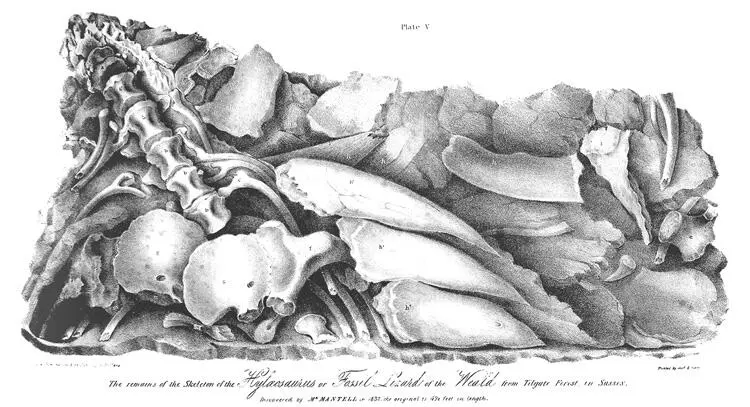
The first engraving of the Hylæosaurus fossil that the Mantells unearthed in the Tilgate Forest quarry in 1832 was redrawn & lithographed by F. Pollard for The Geology of the South East of England , which was published in London a year later.
It was the large fossilized teeth that Mary Ann and Mr. Leney had collected that continued to fascinate Gideon Mantell. He compared these teeth with those of an iguana in the collection of the Hunterian Society and became increasingly convinced that his fossils were from a gigantic version of a monitor lizard. He consulted others on his findings, and in 1824 Cuvier wrote again to concede that: ‘I believe they belong to the order of reptiles.’ Mantell was thrilled by this confirmation from such a well-accepted authority, and thought that he might name the creature Iguanosaurus . A colleague, William Daniel Conybeare, by this time dean of Llandaff in Wales and an active amateur collector, suggested that the name be modified. ‘The name you propose,’ he wrote, ‘Iguano Saurus, will hardly do because it is equally applicable to the modern iguana … Iguanodon (having the teeth of an iguana) would be better.’ Mantell agreed, and presented a paper to the Royal Society on February 10, 1825, entitled ‘Notice on the Iguanodon, a newly discovered fossil reptile, from the sandstone of the Tilgate Forest in Sussex.’ His Iguanodon was officially acknowledged as a gigantic prehistoric reptile, and he had drawn a sketch showing the bones they had retrieved superimposed on how he envisaged the rest of the creature. He was impressed by a pointed spike that had been unearthed, and had wrongly assumed that it belonged on the snout (like the horn on a rhinoceros). He drew attention to the creature’s huge hindlegs, which he compared with those of an elephant, and concluded that their bulk was necessary to fit it for a life on land, writing that ‘the legs must have sustained the weight of the body in a manner more nearly resembling those in the pachydermal Mammalia.’
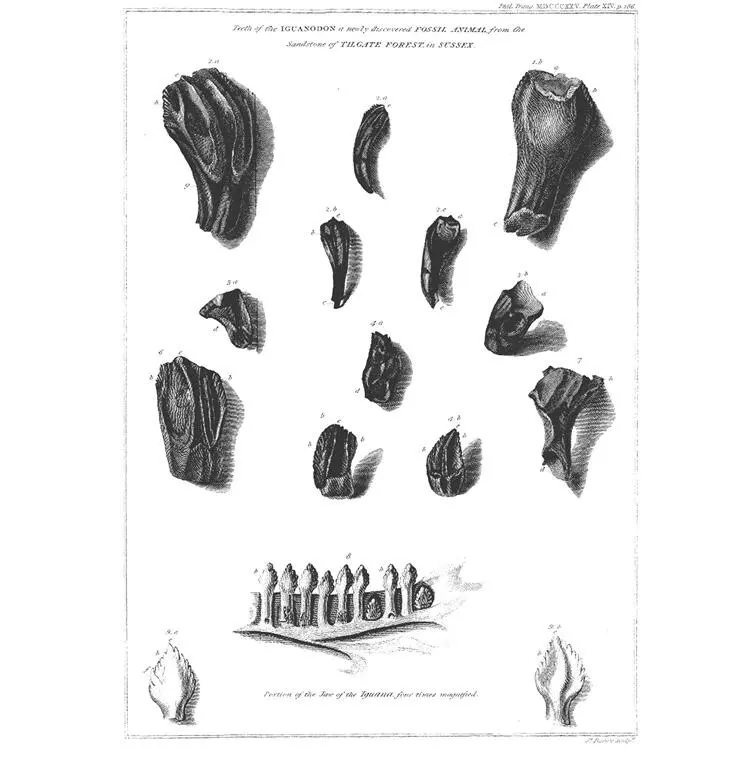
Gideon Mantell illustrated his 1825 paper for the Royal Society with this plate showing the Tilgate Forest iguanadon teeth in comparison with the jaw of an existing iguana. The genus of his fossil has since been reclassified as Therosaurus .
On October 26, 1825, Mantell sent a package of his specimens to Professor Adam Sedgwick at Cambridge University, including ‘casts of the best teeth of the Iguanodon in my collection’ – the originals he kept for himself. Mantell was writing up his notes for a new book on the geology of Sussex and this was to be a landmark publication. Mantell usually referred to it by part of its subtitle: ‘the fossils of the Tilgate Forest’. The specimens were illustrated by his wife Mary Ann in exquisite detail, and have a photographic clarity. For the first time Mantell described the fossil reptiles in detail – the contents page listed them: Crocodiles, Megalosaurus, Iguanodon, Plesiosaurus … these giants of prehistory were now becoming familiar to the academic world. Dinosaurs had at last arrived on the scientific scene.42
The book proved to be a landmark, and its level of detail is astonishing. Mantell discusses with precision the strata in which the fossils were found, dissecting each layer meticulously, so that the book stands today as a definitive statement. This is no amateurish essay into the unknown, but a serious scientific study. Yet the workload was almost unendurable: in his dedication of the book to Davies Gilbert, the Member of Parliament for Bodmin in Cornwall, Mantell wrote: ‘You are fully aware of the disadvantages under which I have laboured, and will generously make every allowance for the imperfections of a work, composed amidst engagements of the most harassing nature.’ Yet he pressed on, and in 1832 discovered the third dinosaur to be scientifically described. It was only half the size of the Iguanodon and Megalosaurus , measuring less than 30 feet (9 metres) long. It was found, again, in strata at Tilgate Forest, and Mantell wrote: ‘I venture to suggest the propriety of referring it to a new genus of saurian … and I propose to distinguish it by the name of Hylæosaurus .’ In spite of his continued success, life was not easy; in 1833 Mantell moved to the seaside resort town of Brighton but could not sustain his medical practice, and, when he became impoverished, his home was converted by the town council into a museum.
Читать дальше
